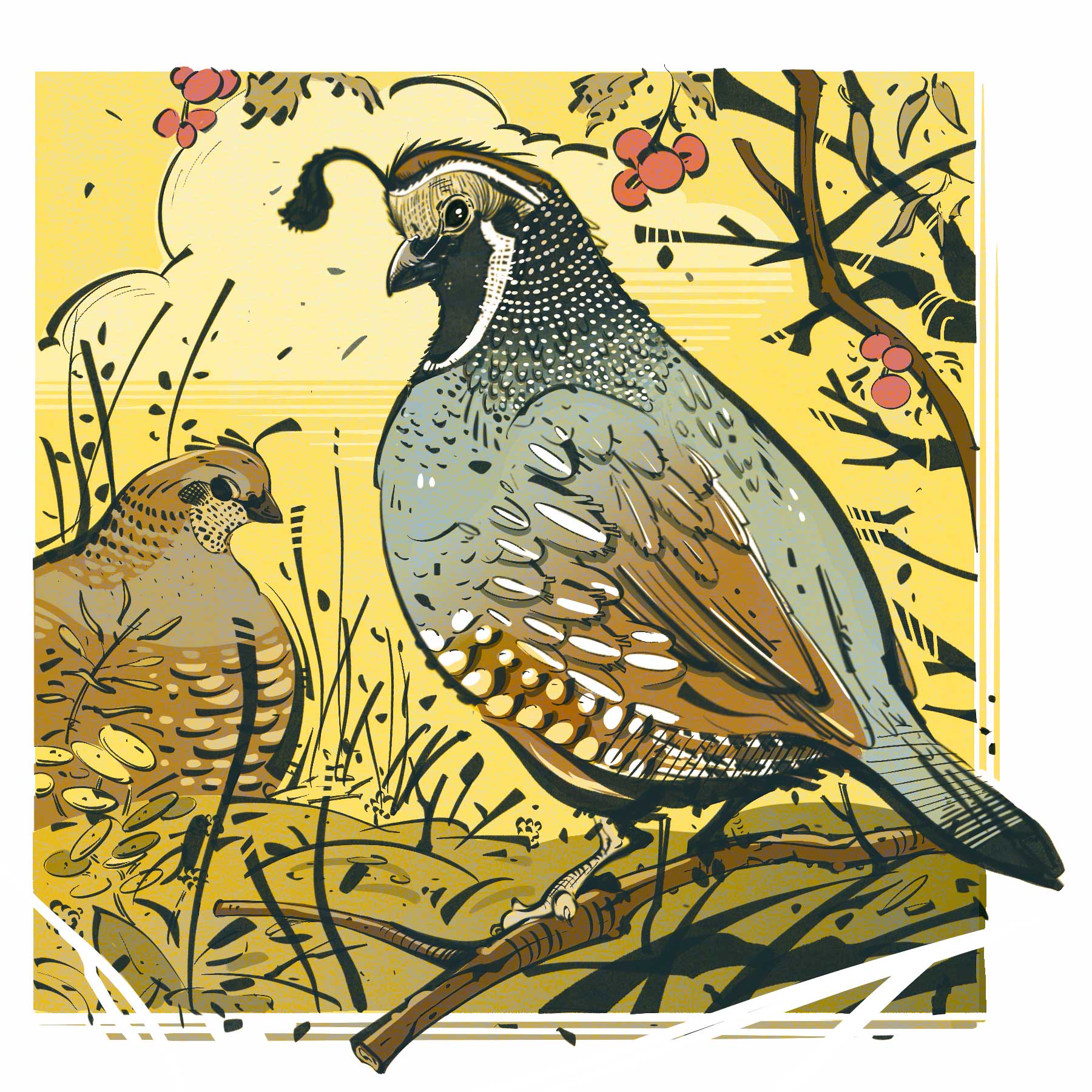Gallinaceous birds (in the order Galliformes) are well represented across the globe. There are about 300 species, in habitats from desert to alpine, and found from the tropics to the arctic. The best known of this order of birds is the domestic chicken, and in fact, part of the definition of gallinaceous birds is “chicken-like,” and that includes some of our most prized game birds.
Advertisement

BC was naturally supplied with wild gallinaceous birds (grouses and ptarmigans), but early settlers of the province thought there was room for more. Many species of partridges, quail and turkeys were collected from their native range and released in BC, but not all succeeded. One successful introduction was California quail (Callipepla californica.) The native range of this bird is basically the state of California and the Baja peninsula (it is the state bird for California), but has been substantially increased by humans. In BC, through the late 1800s, California quail were introduced to the Victoria area, the lower Fraser Valley and the dry valleys of the BC interior. Similar introductions in Washington state likely also contributed to the California quail populations now found through the Okanagan. Currently, the two main breeding areas in BC are southeastern Vancouver Island and the Okanagan and Kettle valleys.
California quail are colourful, chunky little birds. At about 160 grams (six ounces,) they are among the smaller gallinaceous species. Males have a cinnamon-coloured cap atop a black head and bright white throat stripes. The breast is a grey-blue, with a rich chestnut-coloured belly, and a mix of grey and rust, speckled with white, on their wings and flanks. The females’ plumage is more drab, having a brown head and a grey and brown body with a lighter-coloured belly. Males have a distinctive dark head plume comprised of six entwined feathers, arching up and over their faces. Females also have a head plume, but much smaller.
Advertisement
California quail are monogamous, but that is not a particularly lengthy commitment, often one breeding season. They can live six years, but being very popular with predators, few live much past their first birthday. Predation starts the day that the eggs are laid and continues through a quail’s life. Chicks are precocial, that is, able to run as soon as hatched. Good thing too, because they are on the menu for owls, hawks, ravens, bobcats, coyotes, skunks, snakes, even squirrels, as well as domestic cats and dogs. Humans like to hunt them too. They compensate for this high predator mortality by high productivity. Quail breeding season starts in spring and may extend into summer. A clutch is typically 10 to 15 eggs, although there are records of as many as 25 eggs in one nest. In the right conditions, these birds can have three clutches a year, but the breeding records for BC suggest that one or possibly two clutches annually is more likely.
California quail are birds of dry places and can get by without drinking water if necessary, getting needed moisture from digestion. They are mostly granivorous (seed eaters), but also eat the young shoots and leaves of most plants (including many weeds), as well as some insects. To help digest this diet, adult quail have a special mix of microbes in their gut. When freshly hatched, young quail do not have this digestive aid, but acquire it by eating some of the adult birds’ droppings.
Advertisement
California quail are comfortable near people and find food and cover in farmland and suburban areas. These are very social birds and come together in coveys of two dozen or more, wandering across lawns and gardens, scratching and pecking for bugs and seeds (in my yard they are fond of newly sprouted pea seeds.) Constantly alert, though, they are quick to take flight at a perceived threat and head for the cover of a nearby hedge.
In BC in the 1970s, the provincial hunting harvest of California quail was as high as 4,600 birds, but in recent years, that harvest has been below 1,000 per year. The season is still open in Okanagan and Vancouver Island regions, but expanding urban development has eroded the birds’ habitat, and the accompanying hunting restrictions limit hunter opportunities. California quail are still plentiful in certain places in BC, so some local hunters are able to bring these small but tasty, chicken-like birds home for dinner.